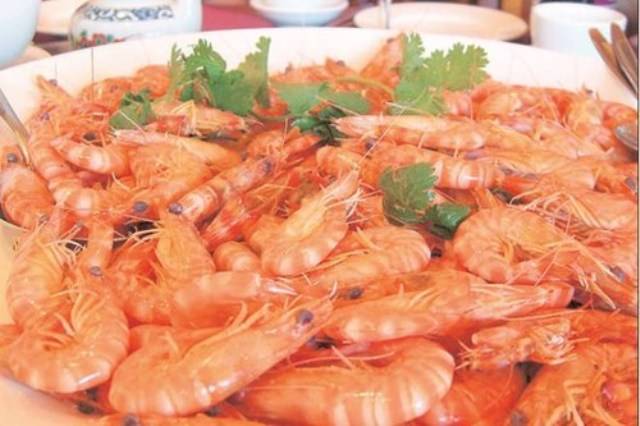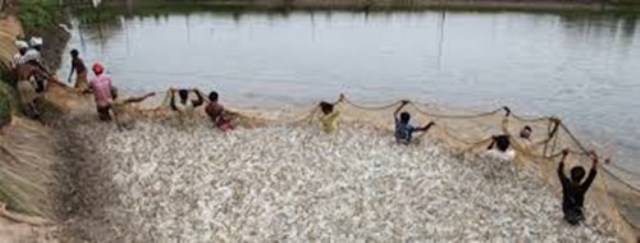
The largest of 300 commercially available shrimp species worldwide, tigers can grow to 13 inches, but harvest size averages 9 to 11 inches. Many countries supply black tigers from both farmed and wild sources. The species is distributed over a huge range, from east and southeast Africa through the Red Sea and Arabian Gulf, around the Indian subcontinent and through the Malay Archipelago to northern Australia and the Philippines.
Important suppliers include Thailand, Bangladesh, India, Indonesia and Malaysia. Asian suppliers generally offer state-of-the-art packing and processing; many follow HACCP guidelines developed for U.S. operations.
Striped like its jungle namesake, the black tiger shrimp is available year-round and is one of Asia’s major aquaculture products. Most tiger shrimp is farmed, though a significant amount is harvested from the wild by trawlers working mud bottoms from very shallow water to depths beyond 300 feet.

India will focus on aquaculture farming of black tiger shrimps in order to de-risk and diversify the seafood export basket, Marine Products Export Development Authority (MPEDA) Chairman A Jayathilak informed. Vannamei, or white shrimps, dominate Indian exports with nearly 70 percent share in dollar earnings, which comes to $ 5.64 billion for the April-January 2018 period.
Jayathilak said that India was known for the export of black tiger shrimps (P. monodon) and focusing on the farming of the species is vital for the seafood export sector. He was speaking to reporters at the soon-to-be-commissioned multi-species aquaculture complex at Vallarpadam in Kochi.
Jayathilak said that the unique feature of the facility will be its tiger shrimp hatchery with a production capacity of 20 million disease-free high-health seeds per annum.

“This effort will revive the black tiger shrimp farming after a gap of two decades and will certainly bring about huge returns, as demand and price for good quality tiger shrimp is very high in the international markets, especially Japan and the European Union,” he pointed out.
Vannamei dominates the aquaculture production in India with black tiger shrimp limited to a minimum share in small pockets. Earlier, black tiger shrimp was mostly captured from sea and not farmed. Vannamei, which is easy and economical to farm, became the dominant species in the last 10 years.
Farmed black tiger shrimp have a mild, almost bland flavor compared to the pronounced taste of ocean-harvested Gulf shrimp. Cooked tiger’s meat is also softer than that of other shrimp species. Tigers have gray to black stripes on gray or bluish shells and associated stripes on the peeled meat. It is the important reason that the Black Tiger Shrimps are exported to fetch more foreign exchange. The shrimps are nutritious also.
In 1996, MPEDA, in collaboration with the Oceanic Institute of Hawaii in the US, began the first Broodstock Multiplication Centre for vannamei in Andhra Pradesh, which sells broodstock to hatcheries across the country. One of the major impediments while undertaking black tiger prawn farming is the lack of healthy, disease-free seeds. Serving as a model, the facility at Kochi will pave the way to establish similar facilities in other parts of the country.

Black tiger shrimp is in demand as the best species for culture in the traditional farming systems of Kerala, named pokkali padashekarams, during the off-season of paddy cultivation. Jayathilak said the hatchery would soon produce disease-free seeds of tiger shrimps by using SPF broodstock. Spread over 8.5 acres, the facility will produce seeds and fingerlings of six-seven commercially important species, which are of high export demand.
The species include tiger shrimp, Asian seabass, pompano, cobia and genetically-improved farmed tilapia, among others. FAO’s GLOBEFISH recently reported that Indian shrimp production is estimated to rise 10 percent in 2018, provided the climate doesn’t create major problems.
However, the scientific name is Penaeus monodon with market name as Shrimp and the common name is Black tiger, giant tiger, jumbo tiger shrimp.















